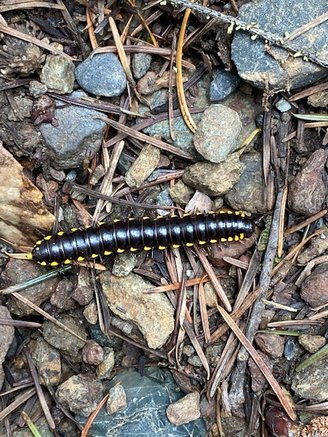The
2022 cannabis farming season is in full swing. Mountain horizons are
now lined with greenhouse plastic, a white shimmering in the distance
that warms my heart and makes me feel at home. Desolate mountain
roads have come alive and motorists share pathways with roaming deer,
turkey, and other wildlife.
Locally
the landscape has changed. Many farms have already closed their
doors and scores of others are up for sale. Revenue is way down for
ancillary support businesses and the mood among remaining Humboldt
County cultivators is mixed. Some are playing it safe, opting for
one or two runs of light dep production instead of two or three. Others are opting to plant their greenhouses while leaving their
full-term plots fallow. Some farmers are fearful, while others are
cautiously optimistic and going all in. Many farms are cutting
costs, and scaling back labor and inputs, while others invest
aggressively in infrastructure, automation, and year-round production
capacity.
Prices
and sales velocity have firmed for high-end mixed light and
greenhouse flower while prices for indoor are coming in substantially
amid exploding production. Outdoor prices remain depressed and sales
have slowed after a brief uptick in March and April.
On
the policy front, several developments look to support small farmers
and the California cannabis community overall.
Interstate
Commerce
Legislation
has been introduced that would allow California to enter into
cannabis trade agreements with other states. This would presumably
provide new opportunities for distribution and help California move
some of its vast oversupply of flower. This will be an interesting
development to watch. I obviously support this move but am uncertain
as to who it will benefit the most.
Will
it benefit small operators, larger operators, or both? Will it
create more of a market for organic, sun-grown flower, or will it be
much of the same – high demand for indoor and mixed-light, with
sun-grown primarily purchased as biomass for value-added products
like extracts, edibles, and topicals? Quickly on the topic of
extracts – congrats to Mattole Valley Organics and Bear Humboldt’s
URSA who just brought home some serious brass from the Emerald Cup
with a first-place win for live rez carts – I’ve said they’re
my favorite and this shows why!
My
baseline assumption is that interstate commerce won’t be the
solution for many family farms. The same issues that hamper sales in
California still apply. A perceived lack of quality, issues with
consistency and predictability of final product, the inefficiencies
and logistical challenges in dealing with more, rather than fewer
producers, and limited brand recognition namely.
If
organic cannabis is like organic food, which accounts for just ten
percent of the overall food market, we have a situation where many,
many producers are competing for the same prize. Sadly, not all will
win.
Event
Sales
Another
proposal is being crafted to directly support small family farmers –
direct-to-consumer sales at events. To me, this is no-brainer
legislation that should pass immediately. All farms regardless of
size should be able to showcase their products and create direct
relationships with consumers. The ability to share one’s craft and
tell one’s story directly to potential buyers should be allowed to
happen now.
While
I love this concept in theory, I again question how many producers
will benefit from this, and to what extent. From what I’ve heard
from distributors, product sales at events are relatively lackluster. While the profitability per unit sold would be much better, paying
travel expenses to set up a booth to sell a few ounces makes little
financial sense. In addition, with potentially hundreds of booths to
tour at a given event, making sure you stand out from the crowd won’t
be easy. I assume a small handful of producers with undeniably
unique or touching stories or undisputed quality will benefit from
this move. Most will not.
Nonetheless,
the ability to create relationships with consumers and share work
openly and directly will be a welcomed opportunity for family farms
that will help some immensely.
Cultivation
Taxes
A
proposal is also circling in Cali about cultivation taxes, the most
universally despised aspect of our state’s cannabis industry. At
current prices, cultivation taxes are an enormous burden that erodes
profitability and hampers business success. The proposal would
eliminate taxes on July 1, just as many farmers in Humboldt are
coming to market with their first harvest.
This
again seems like a very sensible proposal. Cannabis taxes were
supposed to be set at levels sufficient to fund the statewide
regulatory regime, prevent minors from using cannabis, and to curb
illicit market activity.
The
opposite has happened.
With
high tax rates and compliance costs in the regulated market, the
underground has remained firm and exploded in the SoCal desert and
other regions. Kids can get street weed cheap, and unfortunately,
poison their bodies by combusting harmful pesticide and fungicide
residuals.
Significant
tax reform is a must or California’s leadership position in
cannabis production will be lost to other states, or ultimately to
nations like Colombia, Mexico, Thailand, and others.
By
suspending the approximately $160 per pound cultivation tax, there
will be greater profitability up and down the supply chain. I expect
cultivators will recoup some portion of this, while processing,
distribution, and retail will soak up the rest. I do not expect to
see prices per pound immediately increase by the amount of the tax
forgiven. There’s no free lunch in economics and I assume these
increased revenues will be shared along the supply chain, then
quickly competed away with new entrants to market.
National
and Global Developments
To
pretend one knows how the future of cannabis, namely cannabis
cultivation, will play out is a fool’s game. What we know with
certainty is that more and more cannabis will be consumed, and
produced over time. With increasing social, political, and medicinal
acceptance, cannabis consumption will continue to rise globally.
How,
and where the cannabis will be produced is up for grabs. A recent
piece in Forbes argued that greenhouse production is likely to be the
winner. With superior product because of a controlled environment
and with a significantly smaller environmental footprint than indoor,
I agree that greenhouse production is likely to win the sellable
flower game. With lower production costs and product consistency and
beauty comparable to indoor, this seems like a logical outcome.
Where
the product will ultimately be produced is up in the air. I assume
Mexico, Colombia, and other areas outside the United States. Will
central or southern California remain in the game? Will southern
Oregon or our beloved Humboldt County? Will Trinity, Mendo, Sonoma,
and other NorCal regions find a lasting foothold, or will
international conglomerates price us out as they do in most areas of
commercial agriculture?
Like
in finance, trying to predict prices or market outcomes is
challenging to say the least. What I know for sure is that markets
surprise. In cannabis we weren’t talking about Adelanto or
Oklahoma a few years ago – we are now. Soon there will be massive
production hubs that are currently being planned in corporate
boardrooms and among government officials. National legalization
will bring a tidal wave of capital and consolidation that will likely
reshape the industry forever. Who remains in the game is hard to
say, but in all likelihood, the vast majority of companies will fail
and a few strong ones will remain and mop up most of the market.
Regardless
of the ultimate outcome, perform like this season is your last. Push
your body and your mind to the limit. Honor your team, honor your
distribution partners, and above all, honor consumers and the plant
herself with your everyday efforts. Make friends in the right
places, thrown down true fire on the table, and create a name for
yourself and your company. Branding is real and yours must be on
point. Large corporate cultivators have dramatically improved their
craft as recent performance at the Emerald Cup clearly shows. It’s
time to grind and the future is in your hands, no one else’s.
There
will always be a home for passionate, skilled cultivators who can
lead teams, engage owners and investors, and produce consistently
exceptional results. With increased automation and reliance on
data-driven outcomes, mastering technology and newer age cultivation
and fertigation systems is key for those who want to continue in this
business.
In
closing, I note that capitalism is tumultuous, unforgiving, and is
itself, the ultimate disruptor. The pursuit of profits is carnal and
creates a perpetual cycle of birth and death.
A
multidecade era where growing a single plant garnered many thousands
of dollars is over. Growing is simply too widespread and too
replicable. While there is undoubtedly an artisanal component to
farming, growing ganja is no longer a secret.
Very
competent and high-level information is a click away and in very
short order, one can become a highly skilled cultivator –
especially in a controlled environment. Information about water
needs, lighting requirements, airflow, organic or synthetic nutrient
programs, plant training techniques, harvesting, drying, and curing
specifics, integrated pest management, and anything else you care to
learn about weed farming indoor, outdoor, or in greenhouses is now
available for free. We live in the information age and the secret’s
out.
That
said, this industry is in its infancy and still offers a lasting home
for those willing to grow, adapt, scale, or perhaps even work for
others or in collaboration with larger corporate entities.
Much
love as always,
Jesse
###
Jesse Duncan is a lifelong Humboldt County resident, a father of six, a retired financial advisor, and a full-time commercial cannabis grower. He is also the creator of NorCal Financial and Cannabis Consulting, a no-cost platform that helps small farmers improve their cultivation, business, and financial skills. Please check out his blog at, his Instagram at jesse_duncann, and connect with him on Linkedin.

